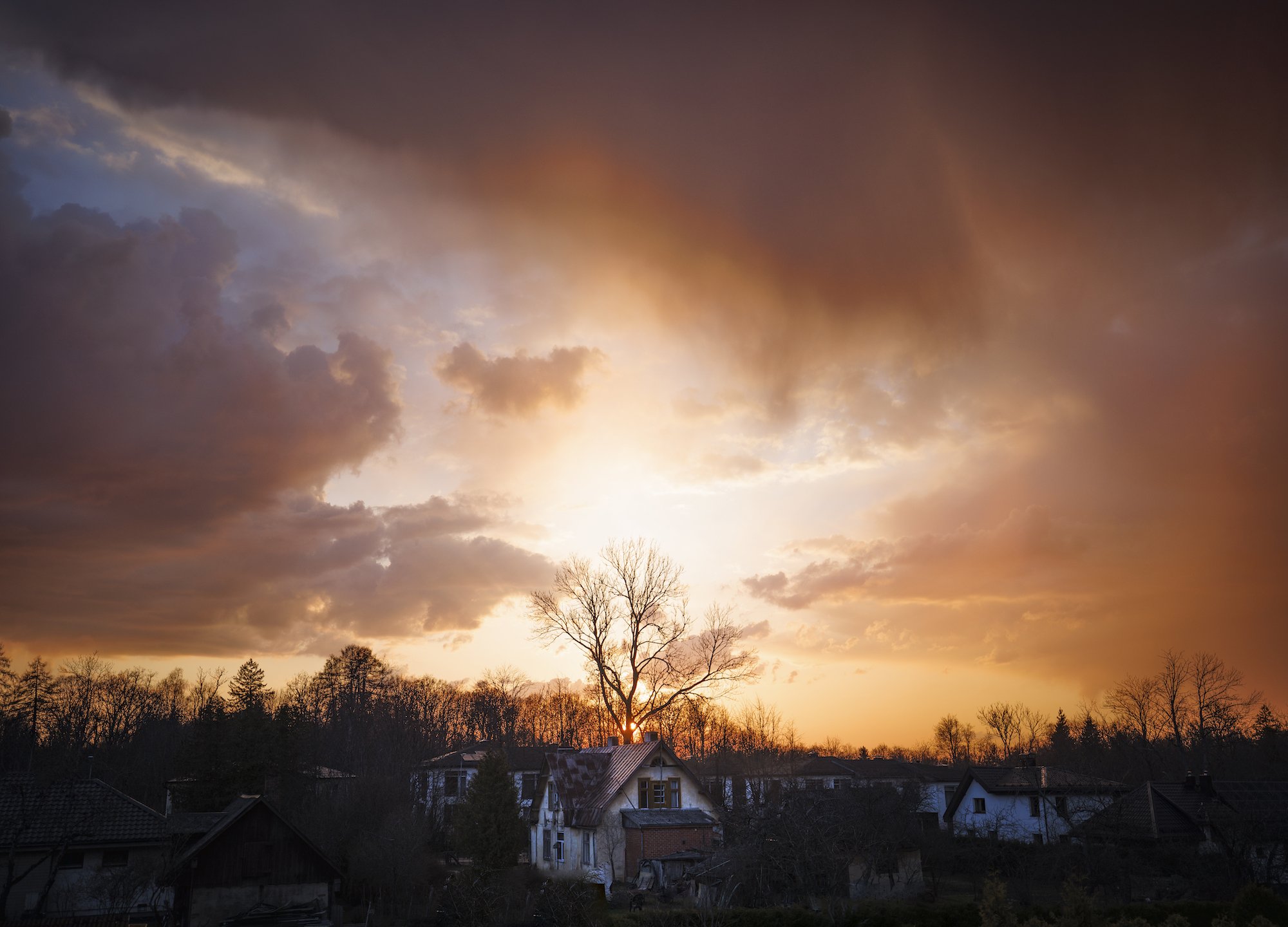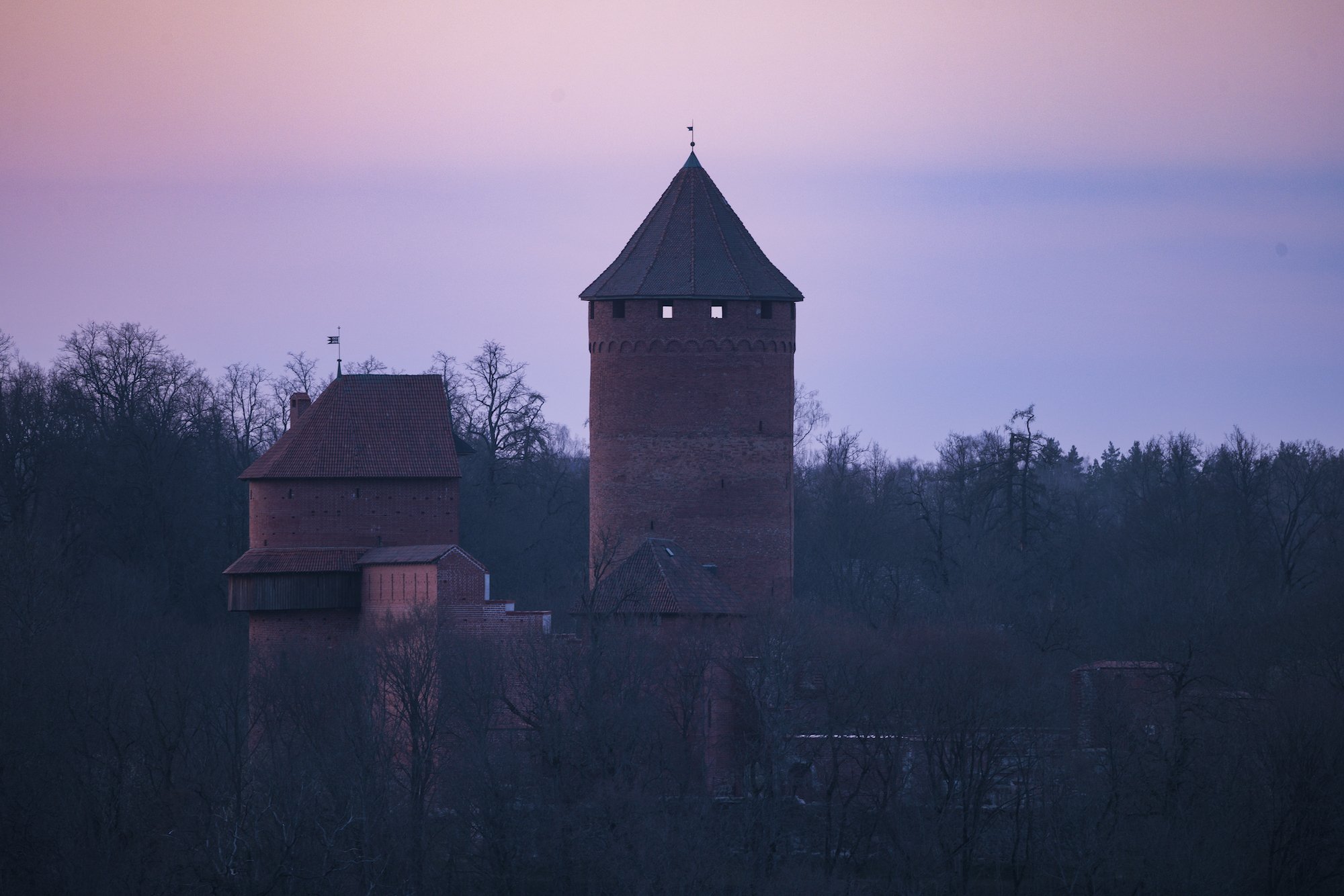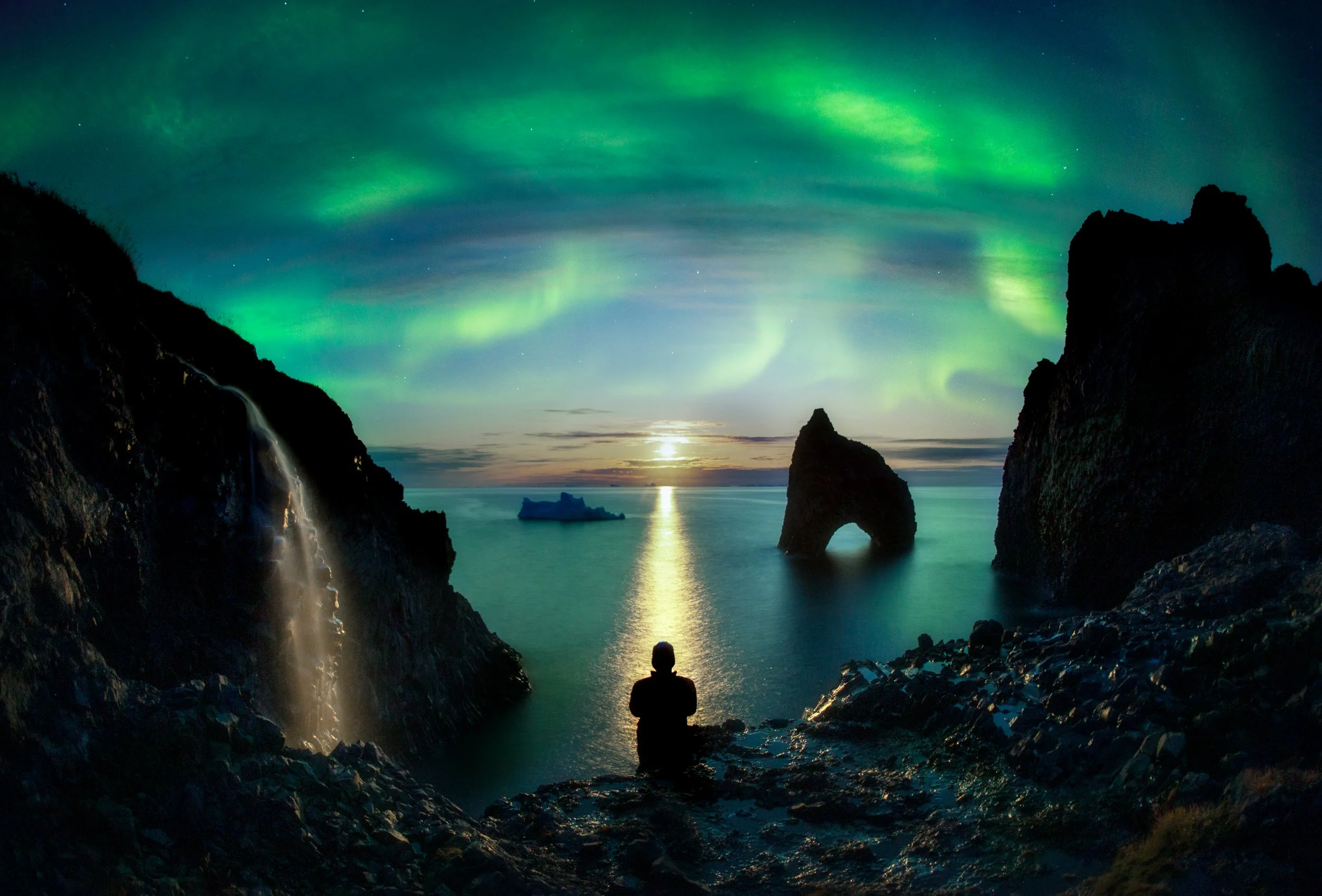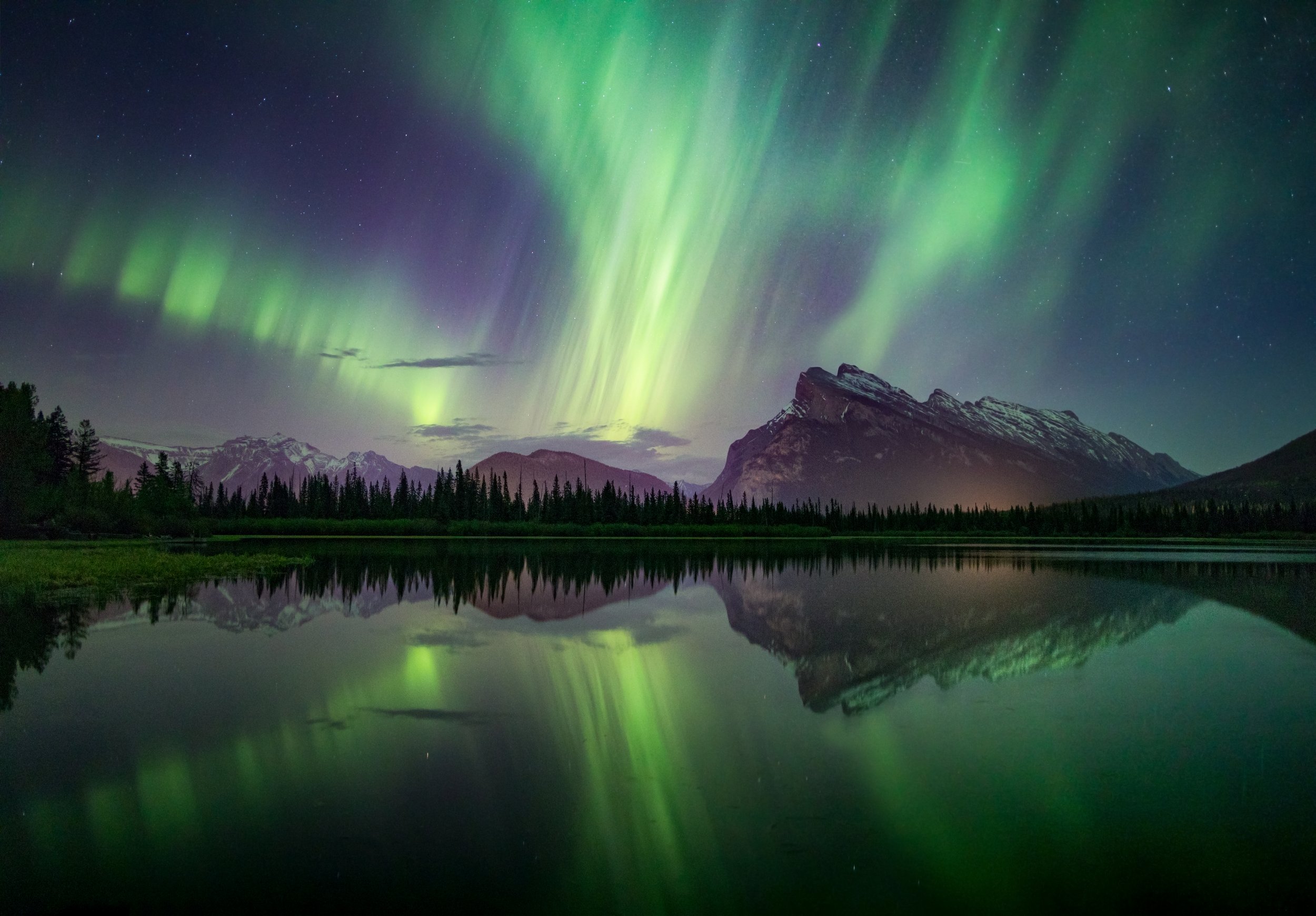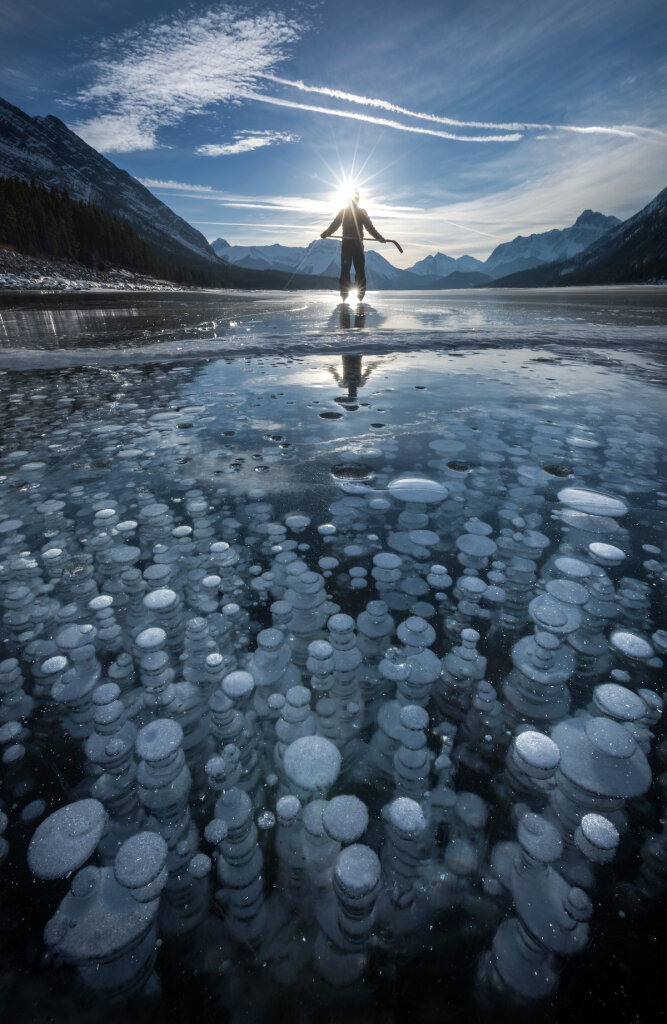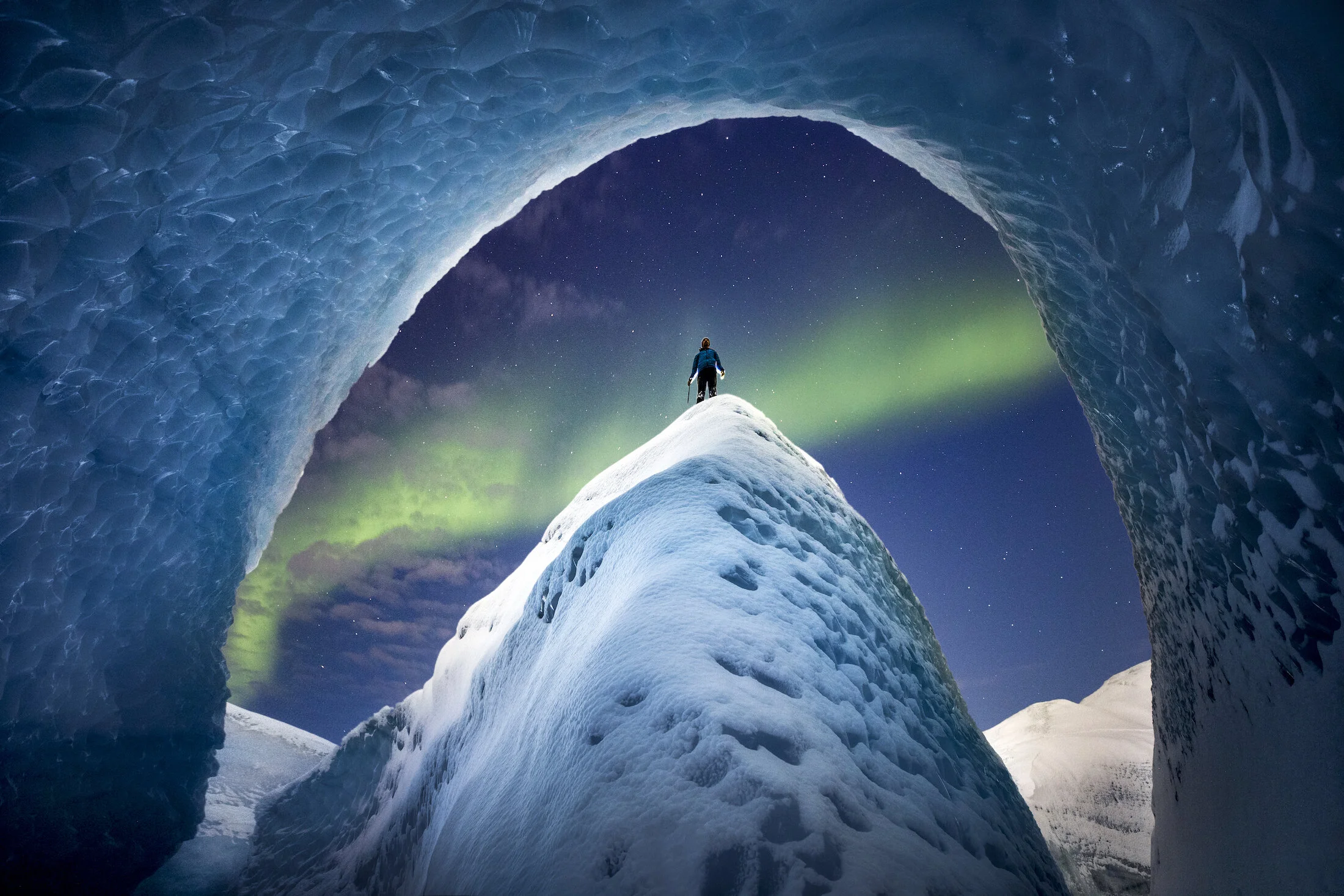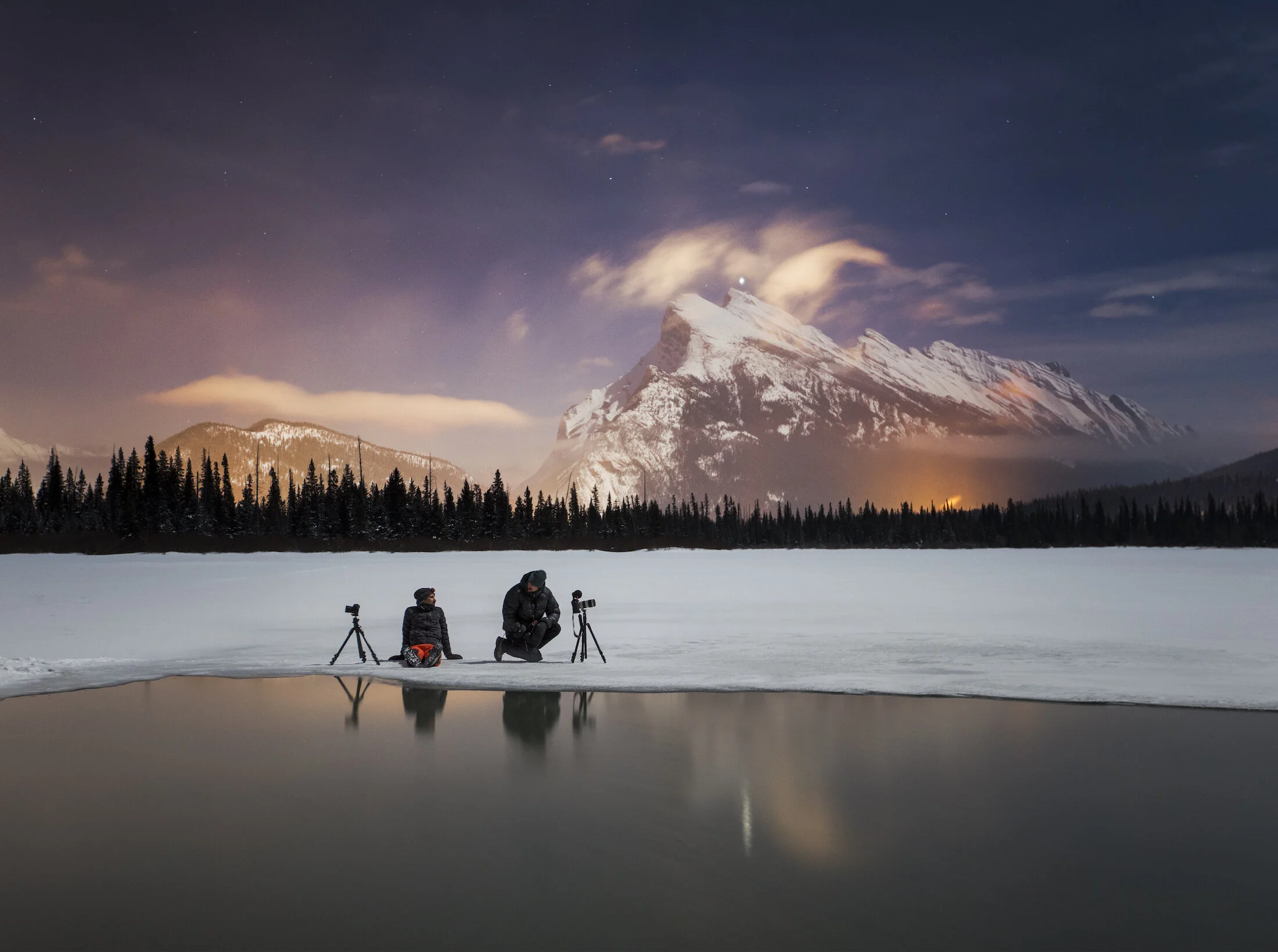
Road Trip Through the Baltics: Lithuania, Latvia and Estonia
Back in April, my family did a road trip through the Baltic nations of Lithuania, Latvia and Estonia. Here are some images from this remarkable (and beautiful!) part of the world.
Every year, my wife and I take our kids abroad. As the kids get older, we’ve been able to start embarking on trips that really keep us on our toes. After a few years of staying in the same place for longer, we’ve started to move around more when we travel, which requires some quick adaptations to languages and customs with each new place we explore. Back in April we took a family road trip through the Baltic nations of Lithuania, Latvia, and Estonia, and brought my dad along for what was a wonderful and adventurous ride.
The Baltic region is located in Northeastern Europe, bordered by the Baltic Sea, Russia, Poland and Belarus. Its proximity to mainland Europe, Russia, and Scandinavia infuses the region with unique influences, which comes out strongly in the local languages, food and social customs. The landscape is largely farmland or forest, with pristine lakes and rivers and a long coastline along the beautiful Baltic Sea. Historic towns, like Tallinn, Estonia, are from medieval times and recent restoration efforts make you feel like you’re stepping into a storybook!
Truthfully, I wasn’t very familiar with the region before we visited, which made for a wonderful learning experience for us all. The histories of these three nations vary, of course, but all involve a complex layering of cultural developments, conflicts and recovery. Today they are increasingly popular for tourism, but as we were visiting in the off-season we were often by ourselves in many places.
Our itinerary took us from Klaipeda, Lithuania, through to Sigulda, Latvia, (in Gauja National Park) to Tallinn, Estonia. Here is a sampling of the images I took in the Baltics from my more dedicated photography sessions (the rest can be viewed on my Stock site).
Meghan J. Ward running on a beach on the Curonian Spit, Lithuania. Photo: Paul Zizka
Cormorant at the Cormorant and Heron colony near Juodrantė, Lithuania. Photo: Paul Zizka
Palanga Beach, Lithuania. Photo: Paul Zizka
Hill of Crosses near Šiauliai, Lithuania. Photo: Paul Zizka
Dobele Evangelical Lutheran Church, Dobele, Latvia. Photo: Paul Zizka
Academia Petrin, Jelgava, Latvia. Photo: Paul Zizka
Dobele Castle Ruins, Dobele, Latvia. Photo: Paul Zizka
Sunset over Sigulda, Latvia. Photo: Paul Zizka
Tea-coloured Amata River, Gauja National Park, Latvia. Photo: Paul Zizka
Relaxing by the Amata River, Latvia. Photo: Paul Zizka
Water play in the Amata River, Gauja National Park, Latvia. Photo: Paul Zizka
Turaida Castle Museum, Sigulda, Latvia. Photo: Paul Zizka
Interior, Sigulda New Castle, Sigulda, Latvia. Photo: Paul Zizka
Bridge over the Gauja River, Sigulda, Latvia. Photo: Paul Zizka
Relics near Ligatne, Latvia. Photo: Paul Zizka
Self-portrait at Gutman's Cave, Gauja National Park, Latvia. Photo: Paul Zizka
Peaceful morning at the Gulf of Riga, Veczemju klintis, Latvia. Photo: Paul Zizka
Meghan J. Ward at Veczemju klintis, Latvia. Photo: Paul Zizka
Kids playing at Veczemju klintis, Latvia. Photo: Paul Zizka
Blue hour over the medieval city of Tallinn, Estonia. Photo: Paul Zizka
Aleksander Nevski katedraal, Tallinn, Estonia. Photo: Paul Zizka
A late-night walk through the Old Town with Meghan J. Ward, Tallinn, Estonia. Photo: Paul Zizka
Spooky scene in the Danish King’s Garden, Tallinn, Estonia. Photo: Paul Zizka
Old Town Square, Tallinn, Estonia. Photo: Paul Zizka
Rooftops, Old Town Tallinn. Estonia. Photo: Paul Zizka
Late-night flower stands. Tallinn, Estonia. Photo: Paul Zizka
All of these images are available as custom limited edition prints.
5 Tips for Viewing and Photographing the Northern Lights
In my mind, few natural phenomena match the magic or grandeur of the aurora borealis. I’ve been actively chasing this natural wonder, also known as the Northern Lights, for over a decade. Based on my experience chasing the lights, here are my top 5 tips for increasing your chances of viewing and/or photographing the northern lights.
In my mind, few natural phenomena match the magic or grandeur of the aurora borealis. I’ve been actively chasing this natural wonder, also known as the Northern Lights, for over a decade. I’ve witnessed the lights materialize in an array of colours—green, purple, pink, reddish, and white—in a variety of patterns and effects, from flashing and pulsing shapes to softly flowing ribbons of light.
How does the aurora borealis occur? Here’s the oversimplified version: when charged particles from the sun strike atoms in Earth’s atmosphere, they cause electrons in the atoms to move to a higher-energy state. When the electrons drop back to a lower energy state, they release photons (light). The wavelength of the photon determines the colour we will see, and the wavelength of the photon depends on the gas that’s being excited. Oxygen will emit green/yellow or red, ionized nitrogen will emit purple, nitrogen will emit light blue, and the other colours are caused by a blending of the two, among other factors.
Understanding the science behind the northern lights doesn’t guarantee that you will be able to see or photograph them. Based on my experience chasing the lights, here are my top 5 tips for increasing your chances of viewing and/or photographing the northern lights.
For a deeper look including tips for reading data, post-processing tips, and a thorough list of resources, check out my eBook: Guide to Viewing and Photographing the Northern Lights (use checkout code AURORAWATCH15 to save 15%!)
1. Understand Your Chances
Your chances of catching the northern lights depend on four factors aligning:
Northern lights activity
Clear skies
Unobstructed views north
Little light pollution.
Put simply, you need the lights to be active, but you also need to be able to see them.
Vermilion Lakes and Mount Rundle, Banff National Park. Photo by Paul Zizka.
2. Get the Right Tools for the Job
Set yourself up for success with the tools and gear that will help you achieve your goal. It doesn’t necessarily need to be the latest or most expensive gear either.
For viewing the northern lights, you’ll need:
A headlamp to help you navigate in the dark.
Access to aurora data or experts (find a list in my eBook!)
Don’t leave without gear and clothing to keep you comfortable including warm layers, warm footwear (cold feet are the beginning of the end!), and hand warmers or heating packs.
For photographing the northern lights:
A DSLR or mirrorless camera that can handle low-light situations
A lens with a fast aperture (ideally 2.8) and wide field of view (ie. 14-18 mm on a full-frame camera)
A sturdy tripod that you can adjust efficiently
For self-portraits or time-lapse: An intervalometer that enables you to program exposures ahead of time (some cameras have this built-in)
A bright headlamp (ideally 200 lumens+ with various beam shapes and power levels plus a red light setting) is useful for focusing images or illuminating subjects. Extra light sources like a Lume Cube can also be handy.
Use code PAULZIZKAPHOTO to save 10% on Lume Cube products.
Self-portrait, Banff National Park. Photo by Paul Zizka.
3. Plan Ahead
Preparation is key, especially when you want to savour every moment the lights are dancing above you.
Scout north-facing locations in the daytime to get a lay of the land and keep a few of these locations in your back pocket. Photographers may even wish to create a visual inventory of compositions in each bookmarked location.
Have a safety plan in place, particularly if you’re going to a remote location on a cold night. This includes packing a first-aid kit, means of communication, and bear spray as well as letting someone at home know what your plans are.
It’s best to be ready for the northern lights at a moment’s notice. Keep your devices and batteries fully charged so they are ready to grab and go at a moment’s notice. It’s also helpful to store spare batteries in warm pockets while in the field.
Ice climber under the aurora. Photo by Paul Zizka.
4. Take Technical Considerations
Photographers chasing the northern lights should keep in mind that night photography can be challenging and time-consuming. Here are some tips that have helped me come away with better images:
Shoot raw to give yourself as much data to work with in the editing room.
Rely on your histogram rather than your LCD to avoid going home with overly dark images.
Turn off auto ISO and shoot in manual mode. I’ve found that taking full control of the settings works better in night photography situations.
Use your lens hood to block stray light.
Use a two-second timer or trigger the shot with an intervalometer as the act of pressing the shutter button can be enough to introduce camera shake.
Download my eBook: Guide to Viewing and Photographing the Northern Lights where I provide my starting settings to help to you get off on the right foot. (Use checkout code AURORAWATCH15 to save 15%!)
A curtain of lights in Greenland. Photo by Paul Zizka.
5. Commit the Time
Remember that catching the aurora borealis requires patience and persistence. There are so many factors that need to align to catch a good show, so don’t be discouraged if it takes multiple tries. Enjoy the thrill of the chase and stick with it!
Walking away from a northern lights show with strong photographs takes time too. The “spray and pray” technique that is often employed during the day simply doesn’t work at night due to the time-consuming nature of long exposures and astrophotography. Don’t be afraid to commit as much as 30 minutes to a single frame. The more you practice, the more efficient you will be when Mother Nature shows off her beauty.
And whatever the results, I hope you’ll put your experience in nature ahead of the images.
Daughter’s first aurora. Self-portrait by Paul Zizka.
For a deeper look including tips for reading data, post-processing tips, and a thorough list of resources, check out my eBook: Guide to Viewing and Photographing the Northern Lights (use checkout code AURORAWATCH15 to save 15%!)
Learn more:
Take a peek at my gear list to see what I rely on in the field.
Learn astrophotography techniques in-person at my Banff at Night workshop or online through my Shooting Stars: The Art of Astrophotography course.
Check out my 10 Favourite Places to Shoot the Northern Lights.
Canadian Pond Hockey at Its Best
I’ve heard it said that we aren’t truly Canadian unless we’ve strapped on some skates, grabbed a stick, and puck-handled our way across a frozen lake or pond. During any given winter day in this country, people of all ages are lacing up and stepping out onto frozen ponds and lakes to enjoy our nation’s greatest backyard pastime.
Is there anything more quintessentially Canada than pond hockey?
I've heard it said that we aren't truly Canadian unless we've strapped on some skates, grabbed a stick, and puck-handled our way across a frozen lake or pond. During any given winter day in this country, people of all ages are lacing up and stepping out onto frozen ponds and lakes to enjoy our nation's greatest backyard pastime.
Sometimes, it can look like this:
Shoot out. Canadian style. Photo by Paul Zizka Photography.
In the Rockies, lake skating usually has a short window. You need a quick freeze and clear skies so that the snow doesn't fall and cover the ice. Usually, this occurs in late fall, but at times the wind blows strongly enough to clear the natural rinks of snow. I've enjoyed some incredible skating even in the month of February. Early in the season, you might see fish swimming below the ice as you skate above them!
But let's go back to pond hockey. I grew up playing hockey, and it's hard to shake the excitement of heading out on the ice, stick in hand, to shoot a few pucks around. Having the chance to capture pond hockey in a way that melds the majesty of the mountain with my own style of shooting is particularly gratifying as a photographer.
Some images are pre-visualized, such as the shoot-out at Lake Louise, and others are captured in the moment. But one of the best things about winter in these parts is that there is no shortage of lakes to photograph or skate on when conditions are prime. Besides Vermilion Lakes and Lake Louise, there is also a plethora of photographic (and skating!) opportunities at Minnewanka, Barrier, Two Jack, Kananaskis, Spray Lake, and Moraine Lake. If you're looking for bubbles, you're most likely to find them at Lake Minnewanka, Spray Lakes, and Abraham Lake.
If you're interested in the locations mentioned in this article, check out Paul Zizka's Guide to Photography in the Canadian Rockies (Banff to Lake Louise Edition).
I also highly recommend checking out the lakes at night. There is something otherworldly and dreamy about gliding along the smooth surface of a lake in the quiet darkness of the evening. The cool air and the silence get the blood pumping and the creative juices flowing, which is a good thing because it can get chilly standing still for photos!
Who knows, maybe Santa will come by to get in on the action...
It also goes without saying: Be safe, and always test the ice before getting into it! Hope to see you out on the lakes this winter!
All of these images are available for purchase as Limited-Edition Prints in a variety of sizes and formats. Place a custom order here!
Behind the Image: Audience of One
This time around, play time meant finding ourselves camping on the Greenland ice sheet for three nights, about 50 kilometres away from the closest settlement, Kangerlussuaq. Our main purpose over those few days was to document supraglacial lakes, these surreal, turquoise bodies of water that have proliferated along the edge of the ice cap recently.
Earlier this month, I was fortunate to return to beautiful Greenland to lead a group with fellow photographers Stephen DesRoches and Curtis Jones. Through OFFBEAT, the company I co-founded with my friend Dave Brosha, we do a number of these epic photography trips every year. They are always rewarding journeys; it is such a privilege to be able to introduce fellow photographers to these wild corners of the planet, and to help guide them along their creative journey. Between the demands on the logistical side, and the fact that our priority is to assist participants with their own photographs, there really isn't much time for leaders to create images of their own. That's why we always make a point to add a few days to any international trip we do for pure creative time. "Play time," as we call it.
This time around, play time meant finding ourselves camping on the Greenland ice sheet for three nights, about 50 kilometres away from the closest settlement, Kangerlussuaq. Our main purpose over those few days was to document supraglacial lakes, these surreal, turquoise bodies of water that have proliferated along the edge of the ice cap recently. Unfortunately, shortly after setting foot on the ice and sending up a reconnaissance drone, we realized we were too late. Winter had arrived early in Greenland and once up on the ice, there was barely any open water to be found. We reluctantly reset our objectives, set up a base camp and focused on finding some other features to photograph. As an avid astrophotographer, my main concern during the day was locating compositions that could be recreated under the stars and, hopefully, the aurora. All of the forecasts agreed that our first two nights would be overcast, but our very last night in the area looked hopeful.
This image is available as a limited-edition print in a variety of sizes and format. See our online store for details!
Despite the blizzard that set in shortly after setting up camp, we made good use of the next 48 hours by locating stunning ice caves and canyons within a kilometre of our tents. By the time the clear night came around, I had 4 or 5 shots I was after. I had a plan and a vision. Nightfall came cloudy, however, and we started getting concerned that our astrophotography plans would fall through. At midnight, we were still fighting the cloud cover despite all forecasts still calling for crystal clear conditions (I had re-checked with the InReach). Behind the veil, one could tell that the aurora was dancing. It was one of those situations where the images still looked great on the back of the cameras (due to the ice features being so photogenic), but every time we'd meet in the dark, one of us would say "Oh man, can you imagine if the clouds weren't there?!" Eventually, Stephen and Curtis decided to make their way back to camp and would shoot there if the skies cleared up. I opted to stick it out a little longer. After all, sunlight wouldn't come for another five hours and I had come all this way. Finally, at around 1 a.m., the cloud cover started dissipating quickly, revealing a bright ribbon of green.
I frantically ran around, crampons on, to re-create the four compositions I had scouted, and was able to frame the aurora borealis in all four. I've always felt I've had more than my share of luck with the aurora over the years. But that night was something else. This particular image was shot from the middle of a bend at the bottom of an ice canyon. The cold may have meant our blue lakes were gone, but it had enabled us to travel along the bottom of such canyons, thus opening up incredible compositions. I set up the tripod, went with settings of f/2.8, ISO 1600 and 10 seconds, manually focus on the rim of the canyon (where I would be standing), got the 5DIV to shoot continuously and then proceeded up the canyon, to a less steep section nearby and then up to the rim for the self-portrait. I placed my Lupine headlamp on the ground behind me to cast a bit of rim light on myself. I took about eight similar images and selected this one because it's the one where the aurora looked best.
Aurora and ice on the Greenland ice sheet. Photo by Paul Zizka Photography.
I hope you like the stories behind the images! I very much look forward to sharing a few more shots from that incredible night!
This image is available as a limited-edition print in a variety of sizes and format. See our online store for details!
Join me on Patreon for more “Behind the Image” video posts, which go into more detail and feature behind-the-scenes footage and my editing process from raw to final.
Trailer Release: In the Starlight
During the darkest hours of the night, while the rest of the world is sleeping, outdoor photographer Paul Zizka ventures out into the wilderness in search of the world’s starriest skies. His journey to photograph the celestial wonders takes him from his home amongst the peaks of the Canadian Rockies to the wild, desert dunes of Namibia and remote ice caps of Greenland. Ever the adventurer, he must balance his work and passion for photography with his equal devotion as a family man. In the Starlight is an intimate portrayal of Paul’s quest to capture the night skies, and what his time spent under the stars has taught him about life, love, adventure, and our place in the universe.
A few years ago, French filmmaker Mathieu Le Lay reached out to me with the idea for a film. Little did we know that the journey to capture footage would take us to the top of Mt. Whitehorn here in the Canadian Rockies, twice to the remote glaciers and fjords of Greenland and to the desert dunes of Namibia. I'm thrilled to finally be able to share the trailer of the film, which premieres on Ushuaïa TV this month. Follow In the Starlight on Facebook for updates on more screenings!
From In the Starlight:
During the darkest hours of the night, while the rest of the world is sleeping, outdoor photographer Paul Zizka ventures out into the wilderness in search of the world’s starriest skies. His journey to photograph the celestial wonders takes him from his home amongst the peaks of the Canadian Rockies to the wild, desert dunes of Namibia and remote ice caps of Greenland. Ever the adventurer, he must balance his work and passion for photography with his equal devotion as a family man. In the Starlight is an intimate portrayal of Paul’s quest to capture the night skies, and what his time spent under the stars has taught him about life, love, adventure, and our place in the universe.
Written, Directed and Edited by
Mathieu Le Lay
Featuring
Paul Zizka
Meghan Ward
Mistaya Zizka
Jesse Milner
Emma Freeman
Takeshi Tani
Cinematography
Mathieu Le Lay
Additional Cinematography
Benjamin Dowie
Photographies
Paul Zizka
Original Soundtrack
Franck Zaragoza
Sound Design
Laurent Mollard
Assistant Designer
Larisa Oltean
Technical Means
L'Atelier Plani
The Beach Audio Productions
Studio Gaïné
Partners
Aquatech
Ball Watch
Canon France
Mountain Hardwear
Syrp
Tasermiut South Greenland Expeditions
Visit Greenland
Wilson Mountain Sports
A Coproduction
Camera Lucida
Mathieu Le Lay Productions
Ushuaïa TV
Camera Lucida
Executive Producer
François Bertrand
Producer
Valérie Grenon
Production Manager
Alison Genet
Associate Producer
Silvia Alba
Coordinating Producers
Céline Delaunay
Aymeric Isnard
Anthony Donato
Stéphanie Garcia
Editorial Assistant & Communication
Lio Guidoni
Ushuaïa TV
Executive Manager
Christophe Sommet
In charge of Acquisitions and Documentary Productions
Annabel Gain
Distribution
CPB International
With the participation of
Centre National du Cinéma et de l’Image Animée
FODACIM
Le Fonds d’Aide au Cinéma de Montagne est une association qui soutient la création de films, grâce à ses partenaires.
© Camera Lucida Productions | Mathieu Le Lay Productions | Ushuaïa TV - 2018
